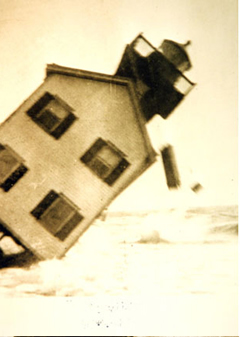Longshore Currents
Currents Tutorial
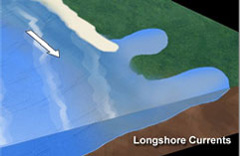
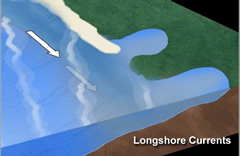
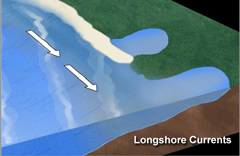
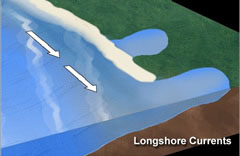
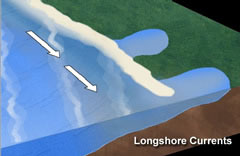
The speed at which waves approach the shore depends on sea floor and shoreline features and the depth of the water. As a wave moves toward the beach, different segments of the wave encounter the beach before others, which slows these segments down. As a result, the wave tends to bend and conform to the general shape of the coastline. Also, waves do not typically reach the beach perfectly parallel to the shoreline. Rather, they arrive at a slight angle, called the “angle of wave approach.”
When a wave reaches a beach or coastline, it releases a burst of energy that generates a current, which runs parallel to the shoreline. This type of current is called a “longshore current.”
Discover: How does an island disappear?
Longshore currents are affected by the velocity and angle of a wave. When a wave breaks at a more acute (steep) angle on a beach, encounters a steeper beach slope, or is very high, longshore currents increase in velocity. Conversely, a wider breaking angle, gentler beach slope, and lower wave height slows a longshore current’s velocity. In either case, the water in a longshore current flows up onto the beach, and back into the ocean, as it moves in a “sheet” formation.
As this sheet of water moves on and off the beach, it can “capture” and transport beach sediment back out to sea. This process, known as “longshore drift,” can cause significant beach erosion.
Currents Lessons
- Welcome
- Tidal Currents 1
- Tidal Currents 2
- Waves
- Longshore Currents
- Rip Currents
- Upwelling
- The Coriolis Effect
- Surface Ocean Currents
- Boundary Currents
- The Ekman Spiral
- Thermohaline Circulation
- The Global Conveyor Belt
- Effects of Climate Change
- Age of Exploration
- What is a "knot"?
- Shallow Water Drifter
- Deep Ocean Drifter
- Current Profiler
- Shore-based Current Meters
- How Currents Affect Our Lives?
- References
- Roadmap to Resources
- Subject Review
